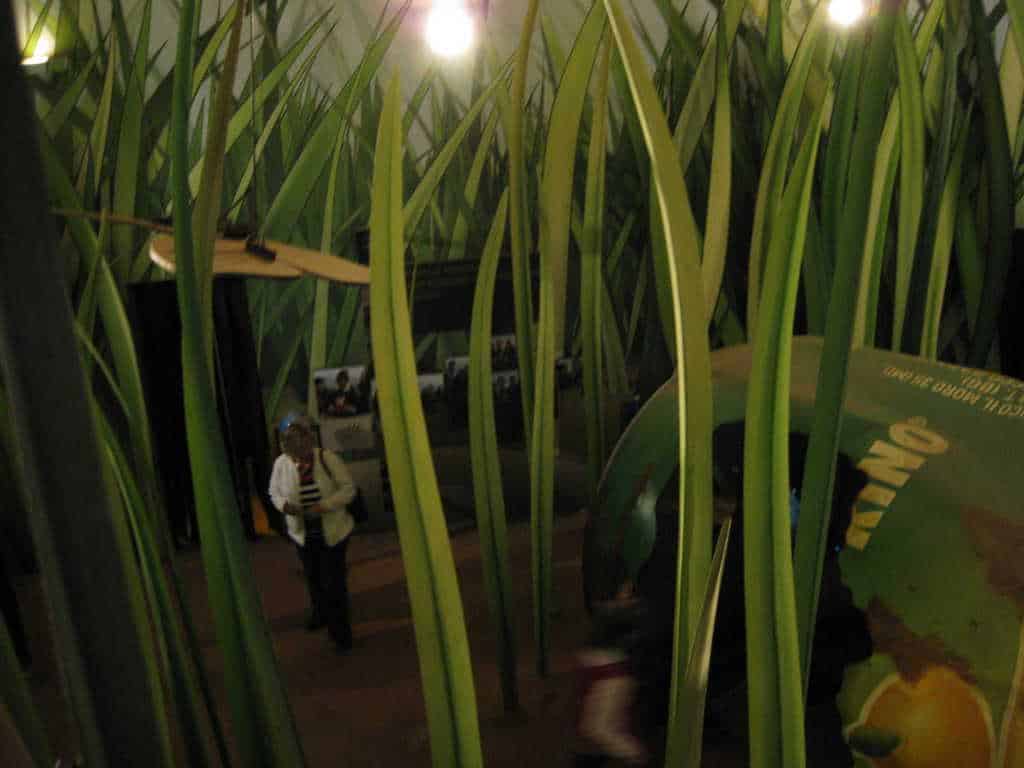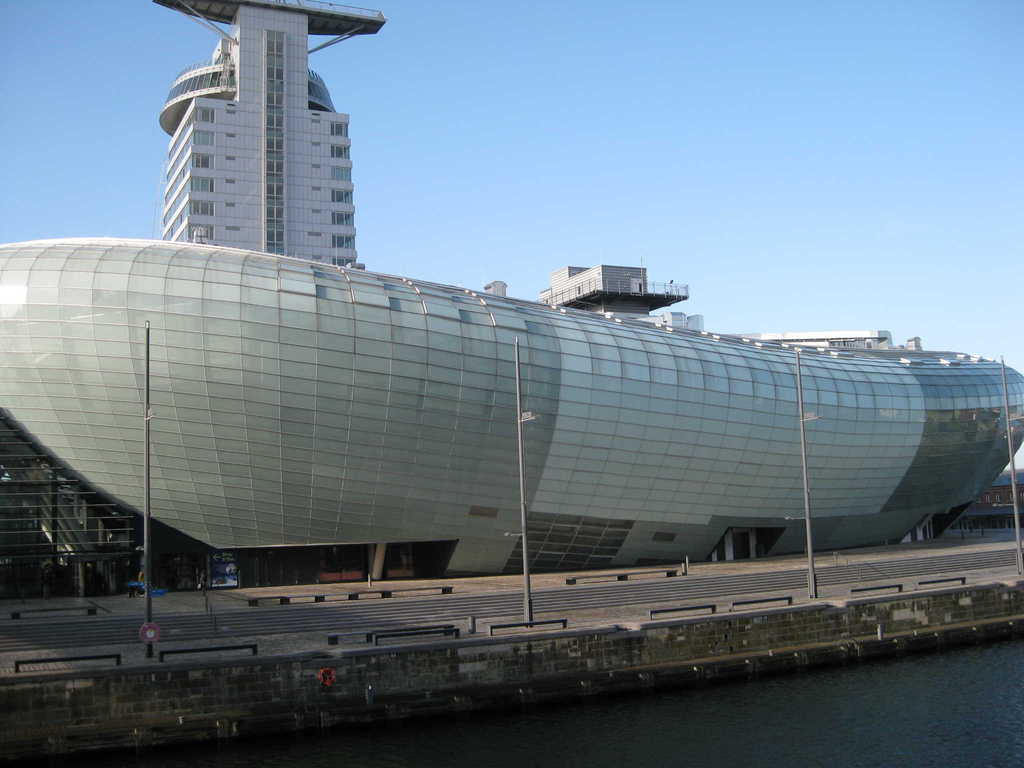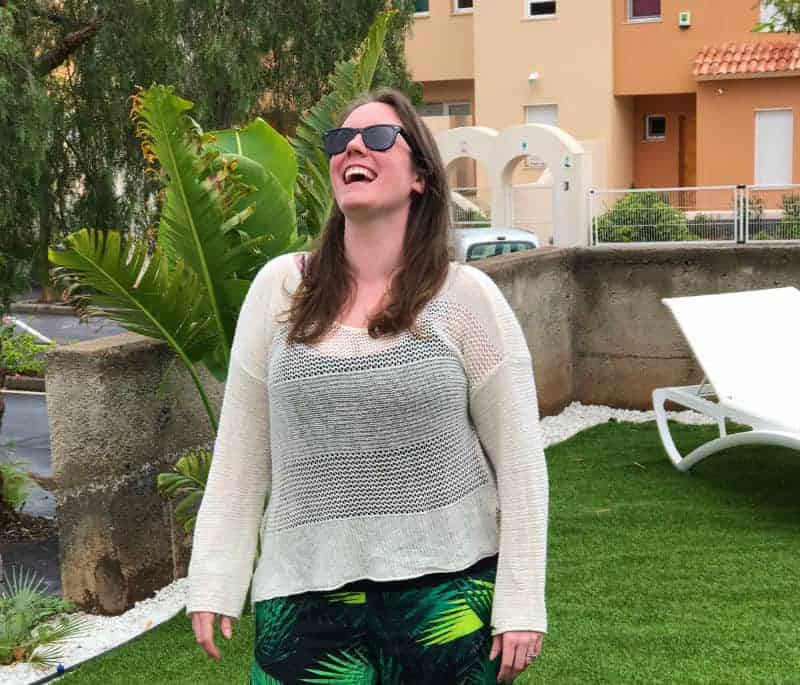I made a face at the picture in front of me. “What does a Sardinian butterfly have to do with climate change?” In an instant, my cousin and I had shrunk down to the size of an insect. We wandered through towering grass, next to other bug-sized museum goers, trying to find an explanation. My cousin pointed to an abandoned soda can, at least twice our size. After stepping through a hole in the side, we found ourselves in a small room with a glowing computer screen.
 A sign below the screen read “Can the flap of a butterfly’s wings in Sardinia cause a hurricane in the Caribbean?” It then explained how small changes in humidity or atmospheric pressure at a point in Central America would affect the weather all the way in the Mediterranean. I stared at changing weather patterns on the screen for a moment. “The Butterfly Effect,” I said to myself, finally understanding. “And we are back to normal size,” my cousin said. Relieved and eager for the next discovery, we started towards the exhibit down the hall.
A sign below the screen read “Can the flap of a butterfly’s wings in Sardinia cause a hurricane in the Caribbean?” It then explained how small changes in humidity or atmospheric pressure at a point in Central America would affect the weather all the way in the Mediterranean. I stared at changing weather patterns on the screen for a moment. “The Butterfly Effect,” I said to myself, finally understanding. “And we are back to normal size,” my cousin said. Relieved and eager for the next discovery, we started towards the exhibit down the hall.
In 2010, the German city of Bremerhaven—which sits on the North Sea in the northwestern part of Germany—became a think tank for climate change research and innovation as local government pushed for its population to reduce their impact on the environment. For this reason, a visit to the self-named “Climate City” should include a stop at the Klimahaus or Climate House—an interactive museum dedicated to showcasing the harmful effects of climate change around the world.
Contained in a massive silver dome sitting in the harbor, the Klimahaus is the city’s shining reminder of its continuing work to counter a grave issue. Visitors follow the expedition of Axel, a real climate scientist, along the eighth degree of latitude as he discovers the effects of climate change around the world. Starting and ending in Germany, the journey takes visitors through nine ecosystems: the Alps, Sardinia, the Sahara, Cameroon’s rainforest, Antarctica, Samoa, Alaska and the North Sea—to explain the weather, wildlife and people that live there. Each stop is a multi-faceted, sensory experience; kids will smell manure in the cow fields of the Alps, shiver in the icy cold of Antarctica (just for a moment) and tread on real sand in the Sahara.
 The Klimahaus can be a quick stop or an entire day—you will need at least three hours if you want to see everything in the museum. A plethora of activities hold delight and engage children, such as digging fossils in the desert, milking a Swiss cow and navigating a rainforest path at night. Along with having fun, these activities give children a first-hand understanding of other cultures and the threats their environments face.
The Klimahaus can be a quick stop or an entire day—you will need at least three hours if you want to see everything in the museum. A plethora of activities hold delight and engage children, such as digging fossils in the desert, milking a Swiss cow and navigating a rainforest path at night. Along with having fun, these activities give children a first-hand understanding of other cultures and the threats their environments face.
Upon “return” to Bremerhaven, the museum invites visitors apply what they have seen to their personal life, beginning with a quiz that determines your carbon footprint and ranks day-to-day activities from most to least “green”. From there, a hallway of small stations provides tips for improving each category in the ranking, including travel, hygiene and eating. Going through with kids, you see how you can help each other reduce your impact—whether it means helping dad sort the recycling or agreeing to walk to the park instead of driving.
Climate change is a hot topic these days, and for our kids, it will remain an issue for many years to come. The Klimahaus does a beautiful job of conveying the weight of climate change to children and adults alike—a huge step towards finding a solution—while providing a day of family fun.
For more information visit:
Klimahaus
Bremerhaven
Susan Johnson is a recent graduate, currently residing in Annapolis, MD. Though she has no children of her own, she firmly believes in the educational and experiential value of travel for all ages, as well as its ability to bring people closer together.


























